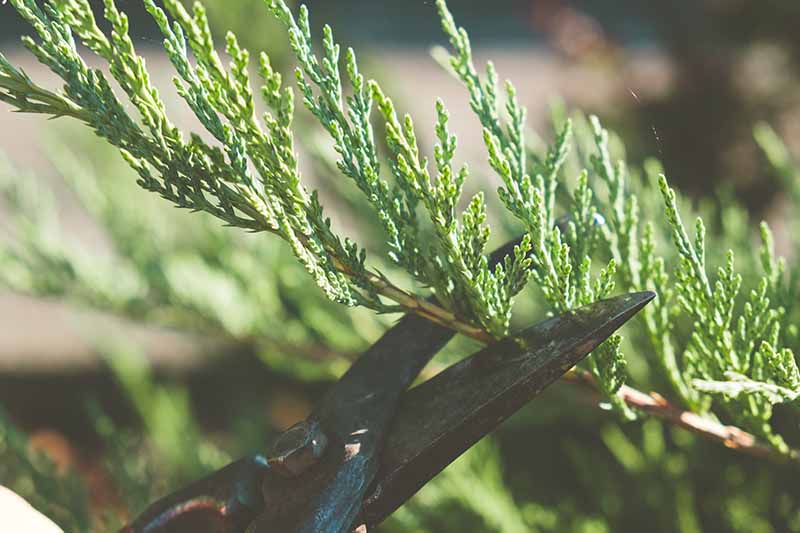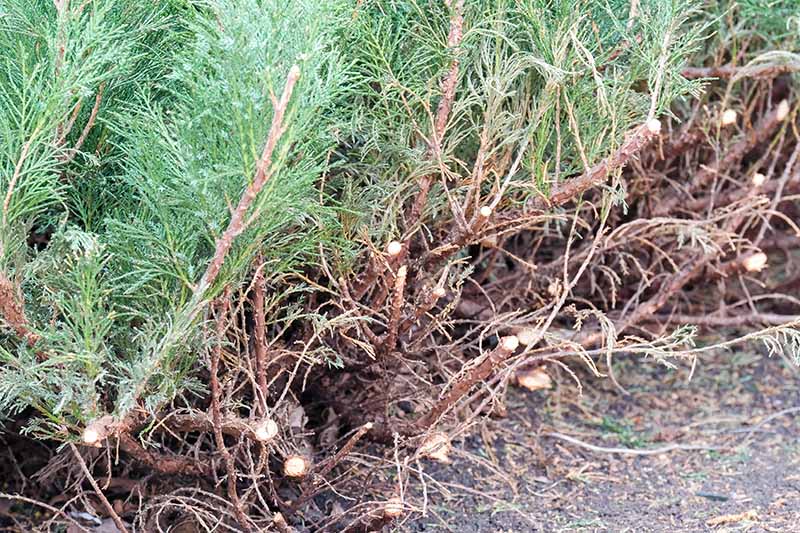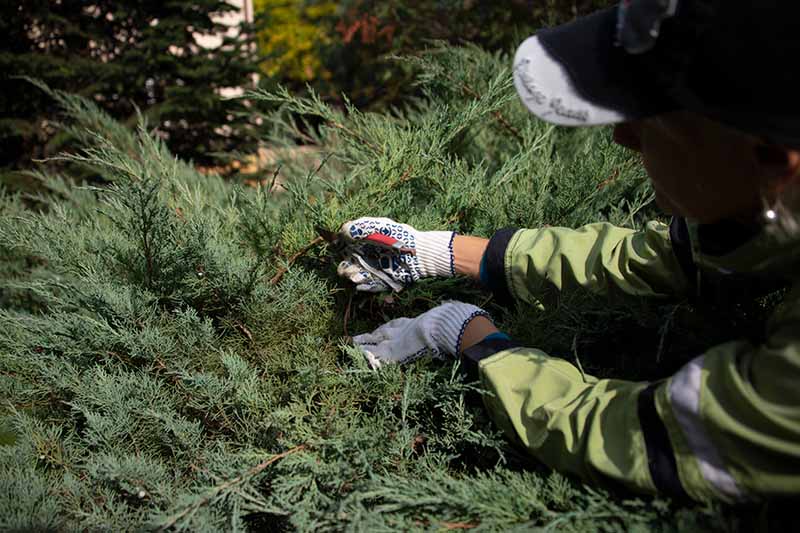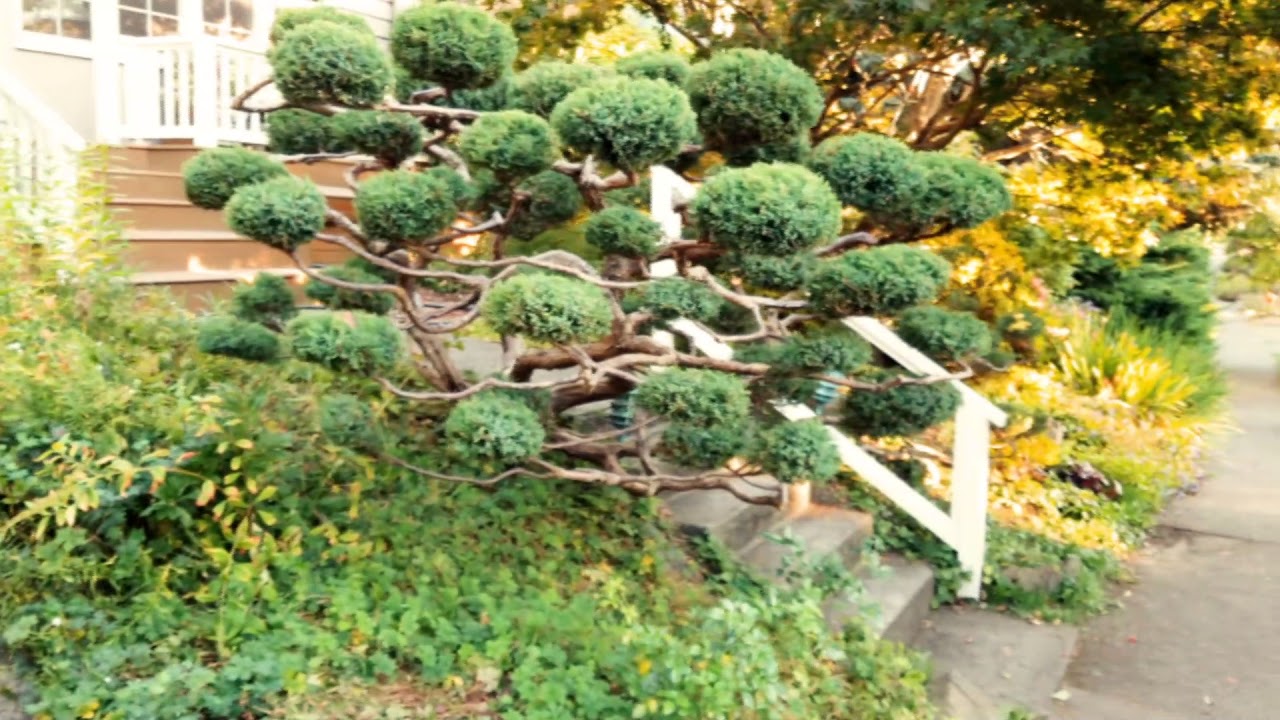Juniper trees are hardy evergreen shrubs that can thrive for years with minimal care. However, occasional pruning is recommended to maintain their natural shape remove dead wood and encourage new growth. Knowing when to prune junipers is key to avoiding damage and improper pruning techniques.
Why Prune Juniper Trees?
There are a few main reasons you may want to prune a juniper tree:
- Remove dead, damaged, or diseased branches
- Thin out dense inner growth
- Maintain size and natural shape
- Promote new growth
- Improve air circulation
- Let sunlight into the center
Without occasional pruning, junipers can become overgrown and leggy. Their natural shape may be lost and inner branches may be shaded out.
When to Prune Junipers
Juniper trees can technically be pruned anytime when temperatures are above freezing. However the optimal time for pruning is early spring before new growth emerges.
Spring Pruning
Pruning junipers in early spring allows you to remove branches and shape the tree before tender new foliage appears. This prevents accidentally damaging the soft new growth.
Trimming in spring also exposes inner branches to sunlight right before the growing period. This encourages robust new growth throughout the tree.
Any major reshaping or rejuvenation pruning is best done in early spring. For basic maintenance, you can also prune in late winter prior to spring growth.
Summer Pruning
You can perform light maintenance pruning on junipers during the summer months. But try to avoid trimming new growth, as it is still delicate at this time.
If needed, you can do some basic shaping pruning in summer. But stick to small trims rather than major reshaping projects.
Fall and Winter Pruning
Try not to prune junipers in fall or winter. Cutting branches right before cold weather sets in can stress the tree. Damaged areas may struggle to heal properly.
Never prune junipers when temperatures dip below freezing, as this can injure the tree. Wait until early spring after the last frost to trim plants again.
How to Properly Prune Juniper Trees
Junipers don’t respond well to overly aggressive pruning. Follow these tips for best results:
-
Never cut into bare branch areas with no foliage. New growth won’t emerge from bare wood.
-
Avoid shearing or cutting main branches growing from the central trunk. This destroys the natural shape.
-
Make cuts just above outward facing buds or branches to encourage bushy new growth.
-
Use sharp, clean pruning tools to avoid ripping or crushing stems.
-
Disinfect tools between trees to prevent disease spread.
-
Remove entire dead or damaged branches by cutting back to the trunk.
-
Thin inner branches to improve light and air penetration.
-
Remove no more than 30% of the tree’s overall branches at one time.
-
Seal large wound cuts with pruning sealer to prevent infections.
Signs Your Juniper Needs Pruning
Watch for these clues that it’s time to prune your juniper tree:
-
Dead, broken, or crossed branches
-
Leggy growth and loss of natural shape
-
Inner foliage thinning out
-
Branches obstructing walkways or structures
-
Lack of new growth or blooms
-
Diseased or insect damaged areas
-
Branches growing into the center of the tree
-
Tree exceeding desired size
-
Overcrowding nearby trees or plants
Pruning Young vs. Mature Junipers
Younger juniper trees generally need less pruning than mature specimens. Here are some age-specific tips:
Young Junipers
- Prune lightly in the first 2-3 years after planting.
- Correct crossed or multiple leaders to establish one central trunk.
- Prune only to enhance natural shape and remove dead wood.
- Don’t trim more than 10-15% of branches at one time.
Mature Junipers
- Can be pruned more heavily to rejuvenate overgrown trees.
- Can remove up to 30% of total branches in one pruning session.
- May need inner branches thinned to improve air circulation.
- Can be trimmed into formal shapes if desired.
Ask an Arborist for Help
If your juniper tree is overgrown or you are unsure of the best pruning method, consult an ISA certified arborist. They can assess the tree’s health, prune properly, and offer advice tailored to your specific tree.
Maintain Healthy, Beautiful Junipers
Juniper trees thrive best with minimal pruning. But occasional trimming and shaping keeps them looking their best. Follow these juniper pruning tips and your tree will remain healthy, full, and shapely for years to come.
The Goal of Pruning Junipers
First, let’s get the bad news out of the way. If you just want to make your juniper smaller instead of giving it shape, pruning won’t work very well.
When you trim your plant, you want to make it bushier, get rid of dead wood, or give it some shape. Otherwise, junipers generally don’t need to be pruned at all.

What about if you want to make your shrub into a topiary or some other formal shape? That’s a different story. That requires some pretty regular pruning and shaping.
What we’re talking about is rejuvenation pruning of neglected plants with dead branches, or performing routine maintenance.
In the same vein, if you have a bush or tree that is too big for its space or that grabs you every time you try to walk by it on the sidewalk, you should dig it up, move it somewhere else, and plant something smaller in its place.
Cutting it back won’t keep it small, and the plant will never look or grow as well as it should.
Boxwoods and some other species can be pruned to stay small and healthy, but junipers aren’t one of those types.
Technically, as long as the temperature isn’t below freezing, you can prune at any time of year. Pruning when it’s below freezing can seriously damage or even kill the plant.
Avoid doing the job in the fall, since this can increase the chance of incurring winter damage.
Early spring or late winter is best. You want to try to break out the secateurs before the tender new growth forms. It’s healthier for the plant and looks better, to boot.
The method you’ll use depends on the size of the branch you are cutting. With secateurs, you can cut branches that are the same diameter as a pencil or smaller. With pruners, you can cut branches that are a bit bigger.
Whichever you use, don’t cut beyond the branch collar. This is a slightly raised spot at the base of where the branch meets the trunk.

Large branches should be trimmed with a saw using a three-step method, as follows.
1. First, saw halfway through the underside of the branch a few inches out from the trunk.
2. The second cut should be made from the top side. Cut about half of the way through the branch at an angle, about half an inch from the lower cut. This will bring you to the undercut. The whole thing should now come away cleanly.
3. Finally, saw away the remaining stump, taking care not to cut past the branch collar. This prevents the weight of the branch from breaking it off as you cut.
If you want to encourage branching, don’t cut back a branch past where the needles are growing. Junipers form needles at the green tip of branches, and old wood won’t form new needles.
If you need to trim a branch back past the point where the needles are, remove it entirely.

You should also remove any branch that doesn’t have needles on it. Remember, it will never start growing new foliage.
It doesn’t matter how many branches you cut off the plant; you should never prune the central trunk, which is called the leader. A healthy evergreen has one central trunk that the rest of the growth emerges from.
Plants with multiple leaders tend to be weaker and are susceptible to damage from wind and heavy snow. If your plant is young and has more than one central leader, remove all but one of them.
Remember that junipers are slow growers, so don’t prune too much all at once. This is particularly true of plants in growing shadier spots. Anything more than a quarter of the plant at a time is too much to trim.
There’s no need to seal the end of the cuts. The bush will do that itself, with the resin that flows inside the plant.
If your goal is to encourage bushy growth, there are a few things to keep in mind.
First, shearing the plant isn’t the way to go about it. This can not only leave dead spots, but it also makes a thick layer of leaves around the outside that shade the inside.

Since the tips of the branches are where new leaves grow, the only way to get bushier growth is to cut off the young, green ends.
Cutting off individual green tips with secateurs instead of shearing the whole plant is the most natural way to do this.
How to Prune Upright Juniper : Grow Guru
FAQ
What time of year do you trim junipers?
Can overgrown junipers be cut back?
How do you shape a juniper?
Can junipers be trimmed in the fall?
When should you prune a juniper tree?
In this blog post, we’ll be looking at how to properly prune a juniper tree in order to get the best results. The best time for pruning a juniper tree is during late winter or early spring when it’s still dormant and before new growth begins. Pruning at this time helps ensure that you won’t damage any buds which will form later in the season.
Can junipers be pruned?
Certainly, junipers can be pruned to reduce their size, either in terms of width or height. It’s crucial to avoid removing more than 30% of the branches in a single growing season. Will junipers grow back? Indeed, junipers will regrow following pruning, and this regrowth occurs relatively quickly.
How do you prune a juniper tree?
The tool and strategy you’re going to use to prune your upright juniper depends on the size of the branch or stem you’re cutting. If you’re working with a piece of wood smaller than your pinky, just use those pruners. Anything bigger calls for a saw or loppers. You can prune green growth to encourage bushiness and shape the plant.
Can You prune a Rocky Mountain juniper?
While the steel blue foliage stands out, what’s particularly nice about this Rocky Mountain juniper (J. scopulorum) is that it’s quite bushy, with lots of soft growth. That means it can handle heavy pruning before you reach the woody stems. This is one of those shrubs that you can actually prune pretty dramatically.
- The Ultimate Guide to Growing Strawberries in Raised Beds - August 8, 2025
- No-Dig Garden Beds: The Easiest Way to Grow a Beautiful Garden - August 6, 2025
- How to Protect and Preserve Wood for Raised Garden Beds - August 6, 2025

